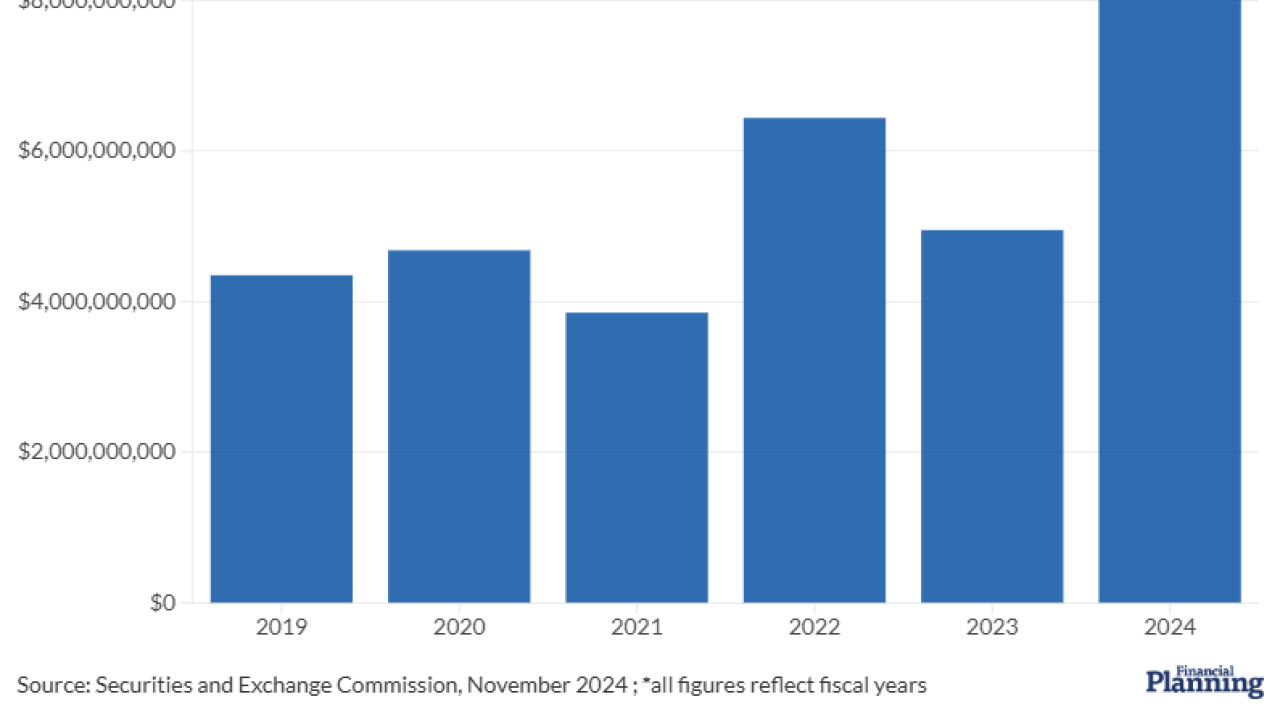ETF and mutual fund providers have been busy bringing new products to market.
The global economic recovery and sustained bull market for equities are two factors driving this trend, according to new research from Ernst & Young.
Total AUM for mutual funds in the U.S. (by far the world's largest market) has returned to pre-crisis levels. Meanwhile, there are now more than 1,500 ETFs in the U.S., with more than $1.7 trillion in assets. Now the question is: With these markets becoming more competitive, how do asset managers position themselves for long-term success in ETFs and mutual funds? According to a recent EY study, the answer lies not necessarily in creating more products.
"Asset managers need to look at redefining their global operating models," says Alan Fish, EY's Americas wealth and asset management advisory leader. "This involves transforming their business processes and technology infrastructures."
In particular, the EY survey found that leading asset managers are focusing on three overarching strategies to organize themselves for sustained growth:
1. Building a global footprint that uses the 24-hour clock for business processes and technology development, while enabling trading across multiple time zones
2. Accessing the next generation of shared services organizations, outsourcing and data management programs to promote flexibility and responsiveness to changing demands from investors and regulators
3. Instituting cost-management programs that include rationalizing products, assessing distribution channels, reviewing global business applications and evaluating low-cost locations.
Changes to Operating Models
While specific areas of focus vary across small, mid-size and large firms, overall, firms are responding to market forces by transforming their operations in seven ways, EY's research shows.
1. Mutual fund and ETF providers are driving asset growth by expanding global distribution channels and focusing on a premier client experience and brand management. Improving distribution channels is the most commonly cited driver of change for operating models. U.S. managers are expanding their brands in Europe, while firms in all locations are assessing how to expand the direct-to-consumer model. U.S. firms are also investing significantly in marketing and brand awareness, especially in Europe, to increase market share.
2. Firms are adopting a strategic approach to complying with a dynamic regulatory environment. Leading firms are holistically assessing and implementing strategic change programs to address a multitude of regulations by various regulators with all their overlaps and conflicts. Mid-size and large firms are implementing new compliance programs that require changes to existing organizational structures, functional alignment, processes, systems and data to manage global compliance.
3. Providers are defining and implementing next-generation global location strategies. As asset managers evolve to the next generation of offshoring, they are looking to leverage their international footprint by creating a global operating model, where the technical and data infrastructure supports more business processes across the front-, middle- and back-offices. Firms are creating global centers of excellence in a low-cost locations, balancing benefits like tax advantages with trade-offs such as proximity to senior management, information security and availability of skilled resources.
4. Managers are expanding third-party outsourcing throughout the operating model. Asset servicers are a fundamental component of a firm's global operating model. They are considering which functions can be outsourced, the optimal number of providers to use and how third-party providers can be integrated effectively to enable timely data access by the enterprise.
5. Organizations are identifying cost savings in existing shared services organizations. Establishing shared services can serve many purposes: streamlining operations prior to outsourcing, preparing for relocating the organization or simply reducing operating costs. For leading firms, the next phase of shared services is focused on driving down costs through reassessing the location of the centers, as well as reviewing business functions that may have previously been considered too complex or close to the customer to be moved into a shared services organization.
6. Companies are working to implement data management and information security standards. Data is critical to a firm's ability to comply with global regulations, establish a truly international footprint and benefit from an array of cost management programs. The top five priorities of all survey respondents are data quality and accuracy, support for increasing regulatory demands, timely availability of data, effective data governance, and support for enterprise reporting.
7. Managers are rationalizing the number of business applications, adopting vendor solutions and driving simplicity throughout the systems infrastructure. As leading firms realize that technology is no longer a differentiator, they are reducing infrastructure complexity and cost by relying more on leading software providers to support their scale, scope and global footprint.
This enables them to shrink the number of applications they use and replace legacy custom applications with vendor-based solutions.
Which firms will emerge winners in this ongoing race for AUM? The ones who are able to create flexible operating models that can respond to changing investor, regulator and market demands.
"This will entail taking an enterprise-wide look at their options for working across the globe, using third parties in new ways and redefining their use of technology and data," Fish explains.





